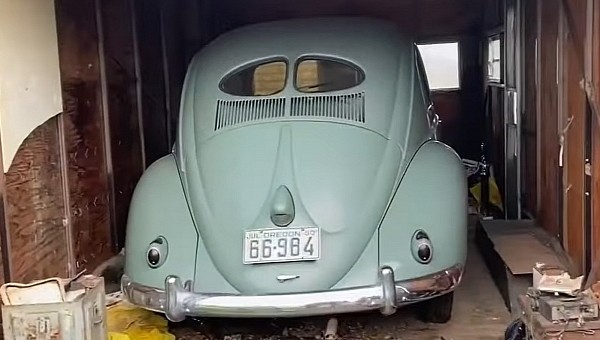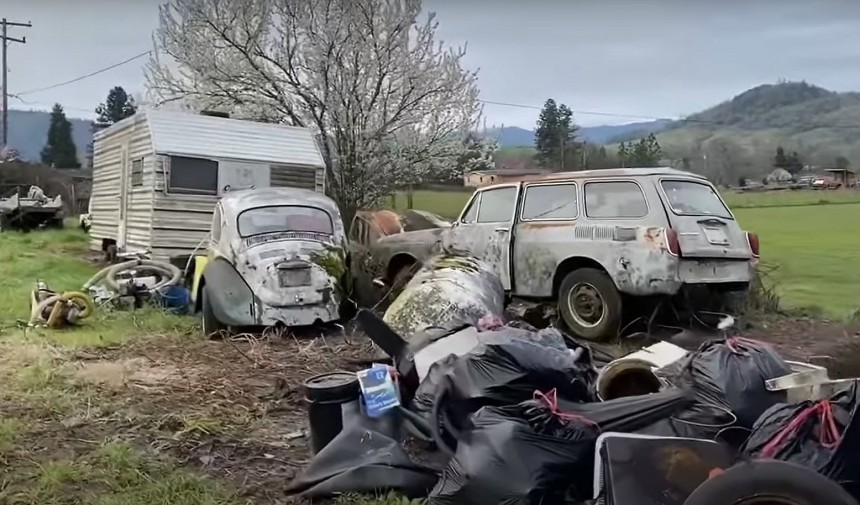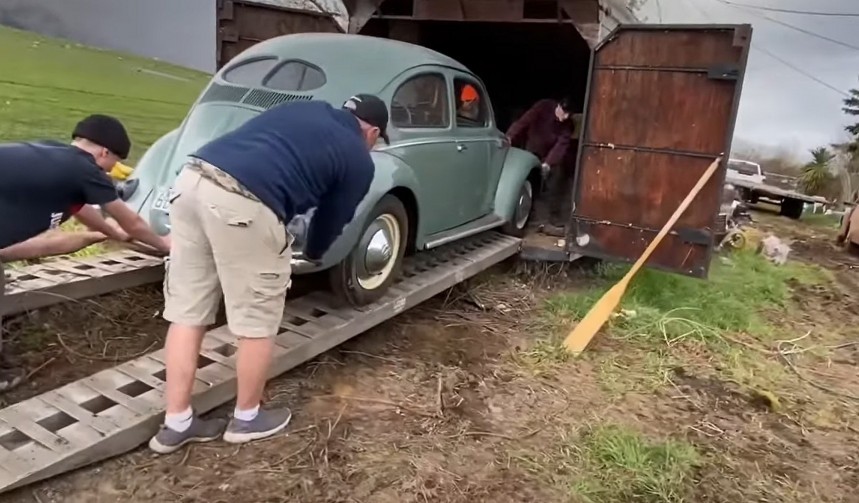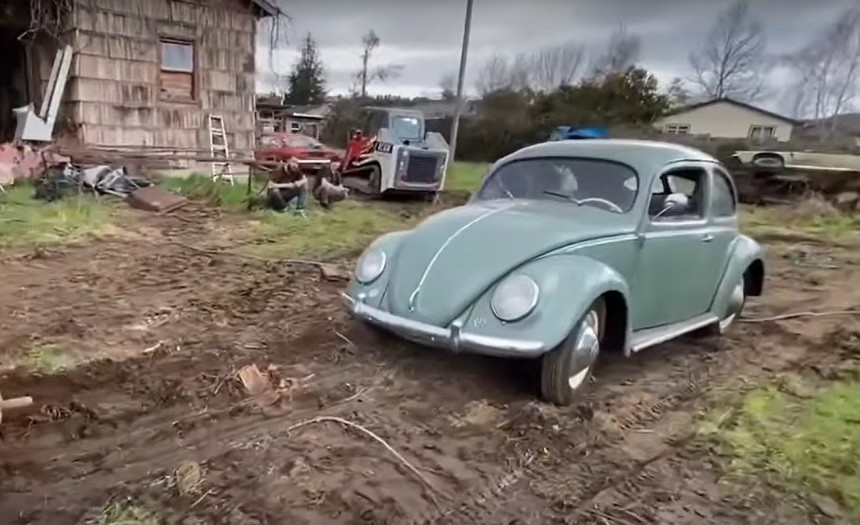Remember the 1946 Volkswagen Beetle that was discovered in a basement in July 2022? Well, here's a different VW collection with an interesting hiding place for a rare Beetle. This time around it's a 1950 split window parked in... wait for it... a camper trailer.
But even though we're talking about lifetime Volkswagen collectors in both cases, the story of this split window bug is different. Because while the 1946 Beetle stashed in the basement was in rough shape and a full restoration away from becoming road-worthy, the one you're about to see below is a nice survivor.
Documented by "Silver Lining Auto Restoration," this gorgeous Beetle spent more than a decade in storage. There's not a lot of background info on it, but we're told it hasn't left the trailer in 12 years.
On the flip side, we don't know if it was driven when that happened in 2010, so there's a chance this historic Volkswagen hasn't sipped gasoline in more than two decades.
What's it doing hidden in a camper trailer, you ask? Well, my best guess is the owner simply used it for storage. Think of it as a barn on wheels.
Yeah, it's not as practical as a building, but at least it kept the Beetle safe from the elements. And based on the way the car looks after it's been cleaned, the trailer was actually a pretty decent solution.
So is this Beetle a full-blown survivor or an older restoration that took long-term storage like a champ? My bet is on the latter, because we're told this classic was featured in Hot VWs magazine in 1984.
So we're probably looking at a Beetle that was restored sometime in the 1980s and then kept mostly indoors for almost 40 years.
But whatever the case, the split window two-door looks the part in 2022. The body is clean and straight from bumper to bumper, there's no rust in sight, and the color is in line with what Volkswagen offered in the 1950s.
The interior looks just as impressive, with no serious wear and tear in the upholstery and just a few scratches around the clocks in the dash.
We don't get a peak under the hood, but I'm pretty sure this thing still has an engine, albeit it probably doesn't run after sitting for so many years. There's no word if the Beetle still rocks its original mill, but if it does, it comes with an air-cooled, 1.1-liter flat-four that delivered 30 horsepower (30.42 ps) and 51 pound-feet (69 Nm) of torque when new.
But is this Beetle a rare example? Well, it depends on what we consider rare. It's not as rare as a HEMI-powered Dodge Charger Daytona because Volkswagen built almost 90,000 Beetles in 1950.
But it's definitely rarer than the model years that followed since annual output jumped beyond 200,000 examples in 1954 and reached 900,000 to one million units per year from 1964 to 1973. But as a split window example, it's a desirable car, especially in such good condition.
The Volkswagen-packed yard also included a 1956 convertible that was rescued alongside the 1950 version. This one may be even rarer because while VW built more than 300,000 Beetles in 1956, fewer than 5% of them were convertibles.
That's around 15,000 units, which is a lot, but fewer than 2,500 of them were imported into the U.S. that year.
Back to the 1950 survivor, this beauty will probably get a refresh before being returned to the road. And that's excellent news for any classic, but especially for a rare and desirable bug that's been in storage for so long. Hit the play button below to see it coming out of the camper trailer for the first time in 12 years.
Documented by "Silver Lining Auto Restoration," this gorgeous Beetle spent more than a decade in storage. There's not a lot of background info on it, but we're told it hasn't left the trailer in 12 years.
On the flip side, we don't know if it was driven when that happened in 2010, so there's a chance this historic Volkswagen hasn't sipped gasoline in more than two decades.
What's it doing hidden in a camper trailer, you ask? Well, my best guess is the owner simply used it for storage. Think of it as a barn on wheels.
So is this Beetle a full-blown survivor or an older restoration that took long-term storage like a champ? My bet is on the latter, because we're told this classic was featured in Hot VWs magazine in 1984.
So we're probably looking at a Beetle that was restored sometime in the 1980s and then kept mostly indoors for almost 40 years.
But whatever the case, the split window two-door looks the part in 2022. The body is clean and straight from bumper to bumper, there's no rust in sight, and the color is in line with what Volkswagen offered in the 1950s.
We don't get a peak under the hood, but I'm pretty sure this thing still has an engine, albeit it probably doesn't run after sitting for so many years. There's no word if the Beetle still rocks its original mill, but if it does, it comes with an air-cooled, 1.1-liter flat-four that delivered 30 horsepower (30.42 ps) and 51 pound-feet (69 Nm) of torque when new.
But is this Beetle a rare example? Well, it depends on what we consider rare. It's not as rare as a HEMI-powered Dodge Charger Daytona because Volkswagen built almost 90,000 Beetles in 1950.
But it's definitely rarer than the model years that followed since annual output jumped beyond 200,000 examples in 1954 and reached 900,000 to one million units per year from 1964 to 1973. But as a split window example, it's a desirable car, especially in such good condition.
That's around 15,000 units, which is a lot, but fewer than 2,500 of them were imported into the U.S. that year.
Back to the 1950 survivor, this beauty will probably get a refresh before being returned to the road. And that's excellent news for any classic, but especially for a rare and desirable bug that's been in storage for so long. Hit the play button below to see it coming out of the camper trailer for the first time in 12 years.














